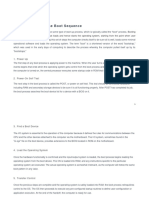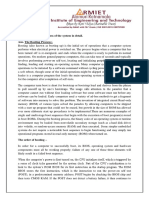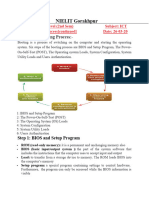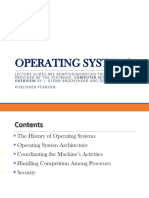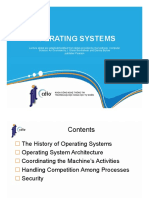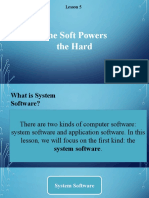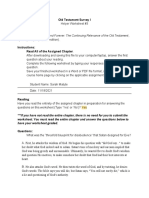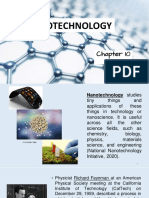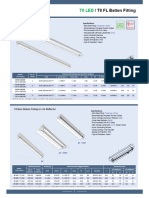0% found this document useful (0 votes)
222 views19 pagesOperating System Notes BSIT
The document discusses the components of a computer system including hardware, operating system, application programs, and users. It then explains the boot process where the BIOS runs self-tests and loads the master boot record which contains the bootloader that loads the operating system into memory, after which the operating system initializes and is ready for user interaction.
Uploaded by
Zeeshan AhmadCopyright
© © All Rights Reserved
We take content rights seriously. If you suspect this is your content, claim it here.
Available Formats
Download as PDF, TXT or read online on Scribd
0% found this document useful (0 votes)
222 views19 pagesOperating System Notes BSIT
The document discusses the components of a computer system including hardware, operating system, application programs, and users. It then explains the boot process where the BIOS runs self-tests and loads the master boot record which contains the bootloader that loads the operating system into memory, after which the operating system initializes and is ready for user interaction.
Uploaded by
Zeeshan AhmadCopyright
© © All Rights Reserved
We take content rights seriously. If you suspect this is your content, claim it here.
Available Formats
Download as PDF, TXT or read online on Scribd
/ 19

